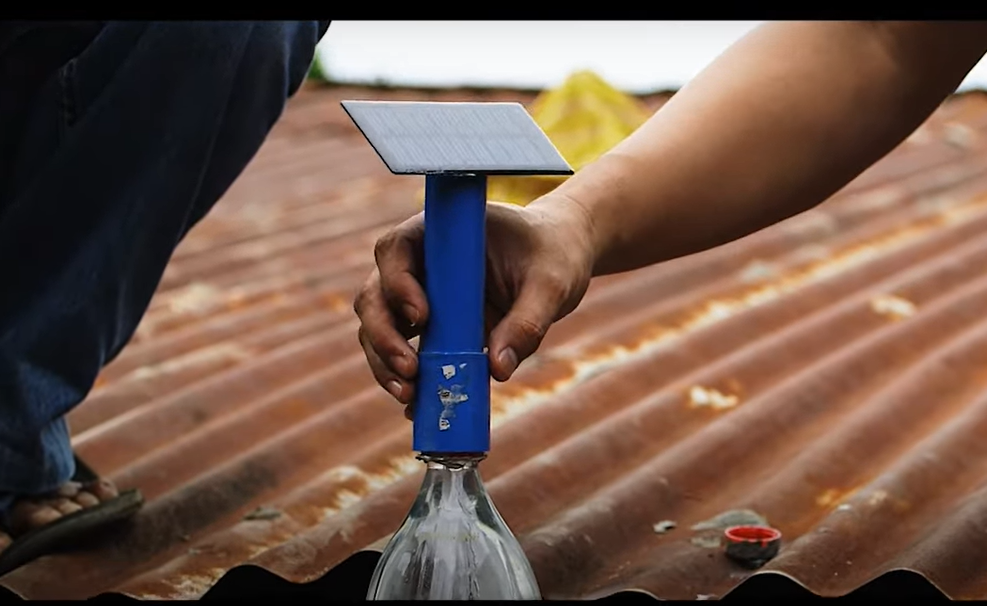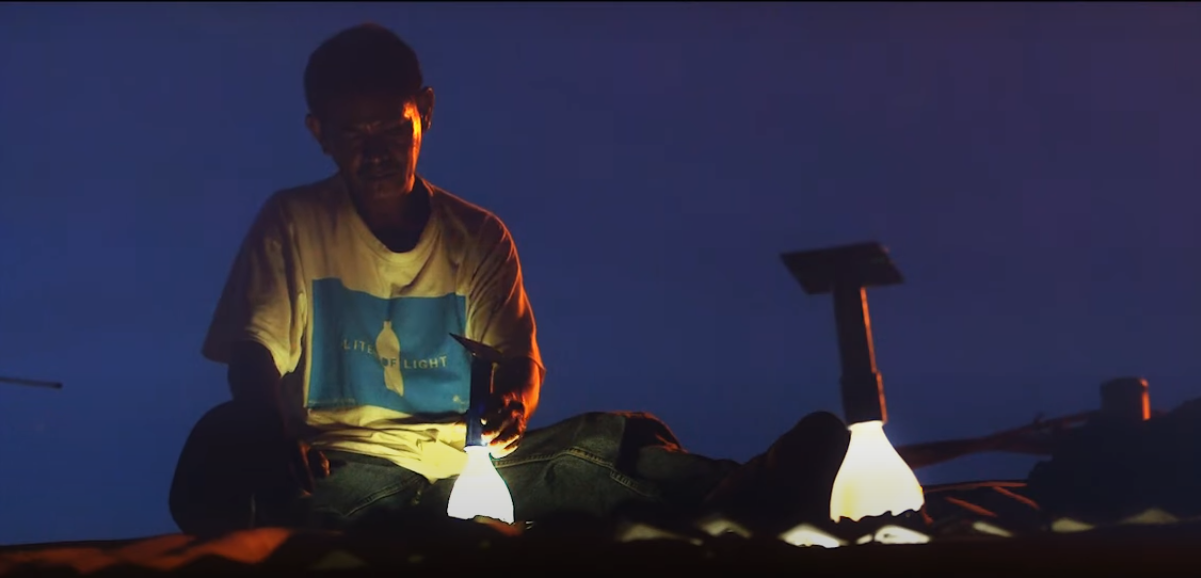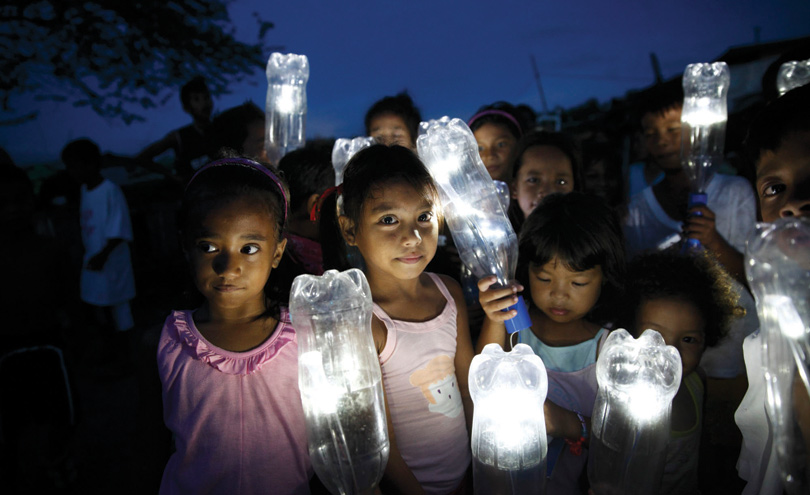- Jigyasa | #1 Newsletter for curious minds
- Posts
- Is it possible to create light from Trash??
Is it possible to create light from Trash??
Discover how Ilac Diaz turned plastic bottles and sunlight into a global solar lighting solution. From rural Philippines to 32 countries and see how one idea is changing lives.
💡 A Problem That Needed Solving
Imagine this: You’re a student who loves learning, but once the sun goes down, your whole house is swallowed by darkness. No lights. No switches to flip. Only a smoky, dangerous kerosene lamp that barely lights the room and burns a hole in your family's wallet.
This isn’t fiction. It’s daily life for millions of families in remote villages across the world.

smoky, dangerous kerosene lamp that barely lights the room
In 2013, a young Filipino engineer named Ilac Diaz was building schools in a rural village. While he was excited to help kids get access to education, he noticed something heartbreaking. The students had no way to study after dark. Their homes were dim, their eyes strained in the smoke of kerosene lamps, and their dreams—well, they had to wait until sunrise.
What shocked Ilac even more was how much these families were paying just to light their homes—sometimes up to 30% of their entire income! That meant less money for food, clothes, or schoolbooks.
Ilac asked the question that started it all:
“There has to be a better way… right?”
🌍 A Spark of Genius: Turning Trash Into Light
That "better way" came from something most of us never think twice about: a plastic bottle.
All around the village, empty plastic bottles were piled up used once, then thrown away. But Ilac looked at those bottles differently. To him, they weren’t garbage they were a possibility.
What if a plastic bottle could become a lightbulb?
Sounds impossible, right? But Ilac wasn’t after fancy solutions. He wanted something simple, cheap, and easy to build. So he filled a plastic bottle with water and a bit of bleach (to stop algae), then fit it through a hole in a roof. And when the sun hit it...
💥 Boom! The room lit up!

Plastic bottle with water and a bit of bleach (to stop algae)
It was just sunlight bending and bouncing inside the bottle, but it worked like a charm. No electricity, no wires, no batteries—just science and sunlight.
This was the birth of something amazing:
A Liter of Light —a bottle bulb that could light up a dark room during the day using nothing but the power of the sun.
But Ilac wasn’t done yet.
🌞 The Quest for a 24-Hour Light
There was still one big problem.
The sun goes down. The bottle light goes out.
Ilac thought, What good is a daytime light if kids still can't read at night? He knew he had to take his invention one step further.
So he began working on an upgraded version. This time, he added a tiny solar panel, a rechargeable battery, and an energy-saving LED light. The solar panel soaked up sunlight during the day, and the battery stored enough power to keep the lamp glowing through the night.

A Tiny solar panel, a rechargeable battery, and an energy-saving LED light.
The solar panel soaked up sunlight during the day, and the battery stored enough power to keep the lamp glowing through the night.
Now, it wasn’t just a bottle light. It was a solar night lamp made from recycled materials—and it worked 24/7.
This simple, clever creation wasn’t just a tool. It was a beacon of hope.
🌟 Lighting Up the World: From One Village to 32 Countries
Ilac didn’t want to just invent something cool. He wanted to share it.
He started teaching people in other countries how to build these solar bottle lamps using materials they already had. Villagers didn’t need to wait for help from outside—they could become the inventors, builders, and fixers themselves.
From the Philippines, the Litter of Light project spread to over 32 countries from small towns in India, to villages in Africa, to communities in South America. In each place, it brought something powerful:
not just light but dignity, independence, and inspiration.

From the Philippines, the Litter of Light project spread to over 32 countries from small towns in India, to villages in Africa, to communities in South America.
🔦 More Than Just Light: The Ripple Effect
The effects were life-changing:
📚 Better Education – Children could now study after sunset. Dreams weren’t delayed because of darkness.
👮♀️ Improved Safety – Well-lit streets and homes meant fewer accidents and reduced crime.
🌱 Eco-Friendly Habits – Trash became treasure. Solar power replaced pollution.
All of this... started with a simple question and a discarded bottle.

🌱 Be the Change: How Can You Help?
Ilac Diaz didn’t have fancy equipment. He didn’t wait for a superhero. He became the problem-solver himself. And you can too. Here’s how you can get started:
♻️ Recycle creatively – Look at plastic bottles, cartons, or cardboard and ask, “What can I build with this?”
🔬 Learn about solar energy – How does it work? Why is it clean and powerful?
🧠 Ask good questions – Every great idea begins with one.
Remember: Change doesn’t always come from big companies. Sometimes, it comes from curious kids and creative hearts.
❓ Question to Research This Week
If you had only plastic waste, sunlight, and your imagination, what useful invention would YOU create?
💭 Final Thought
“Even the smallest light can chase away the biggest darkness. All it takes is one idea—and someone brave enough to try it.”
🎁 Bonus Resources
👇 Join the Jigyasa WhatsApp Channel Now
Don’t let your child miss the next story that could inspire their future.
Let’s build a world where learning feels like magic again.
Why?
Because we want to reach you faster, easier, and more directly—so your child never misses another chance to explore, imagine, and create.
⚠️ Important:
All exclusive deep-dive content will always arrive via email first (so keep checking your inbox!)
But we’ll share highlights and reminders on WhatsApp 1 or 2 days later just in case you miss it.
Reply